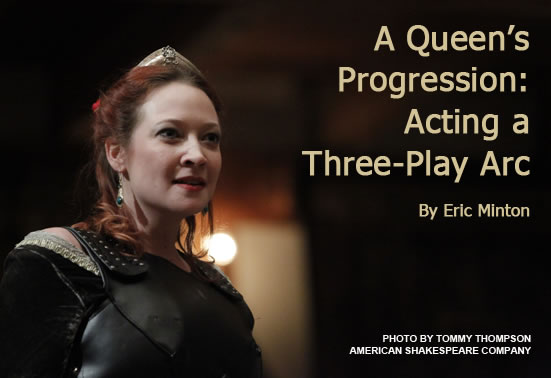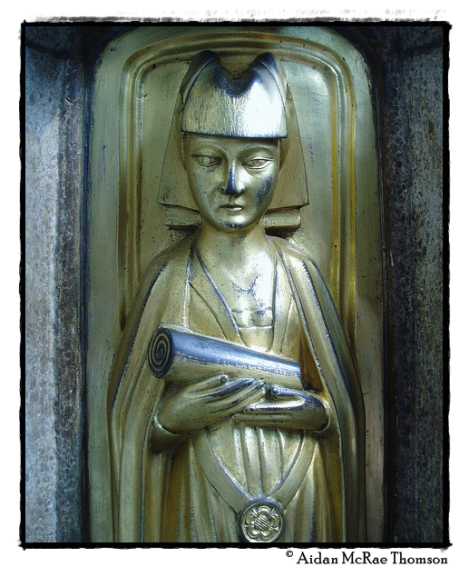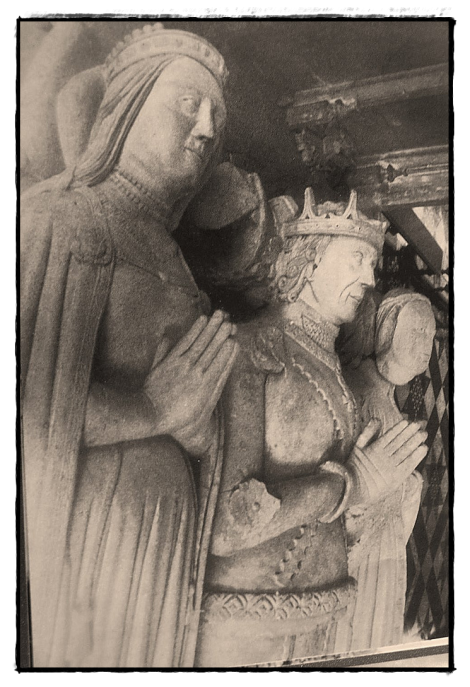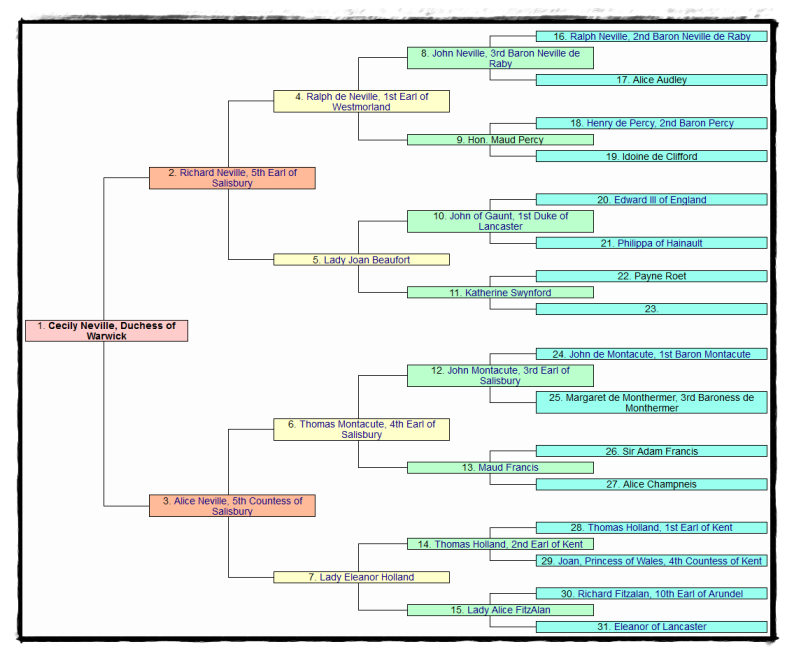http://www.trutv.com/library/crime/terrorists_spies/assassins/napoleon_bonaparte/10.html
Explaining the Arsenic
An interesting study by David Jones of the University of Newcastle casts doubts on the arsenic poisoning theory. An examination of the wallpaper at Longwood House reveals a relatively high level of arsenic, used at that time to produce a green pigment, "Scheele's Green." In the damp environment of St. Helena, it would be possible to speculate that mold, forming on the clammy walls, would metabolize the green pigment releasing arsenic in the form of gas. Such exposure could produce a condition known as "Gosio's Disease," with symptoms of chronic arsenic poisoning. This would explain the high levels of arsenic in Napoleon's hair. Whether this theory would explain the intermittent levels of arsenic found by Smith is problematic, since one would expect a constant level. A counter argument to this would be that the intermittent levels could be correlated with seasonable changes of alternating periods of damp and dry. The wallpaper theory remains interesting, but inconclusive. If it were possible to obtain hair samples from others who were living at Longwood during that period, and if those samples also contained high levels of arsenic, then the theory would be more credible.
It has been noted by Karlen and others that many medicines used at the time contained small amounts of arsenic, as well as mercury and antimony. Could these have been the sources for the arsenic in Napoleon's hair? Further, the presence of mercury and antimony can confuse an analysis designed to assay for arsenic.
There is a dispute about the relative amounts of arsenic. Is it possible that, considering the wallpaper and arsenic-based medicines, the arsenic levels are not all that much higher than normal? After all, it is argued, arsenic may have been more prevalent in the environment of St. Helena than has been formerly recognized.
Finally, there is dispute over the accuracy of dating the hair samples purportedly from Napoleon. One difficult finding is that a sample identified as being from 1808 — well before the period of exile — contains higher than normal levels of arsenic. Either Napoleon was ingesting arsenic well before any plot to poison him, or the dating of the samples is wrong.
There seems to be a distaste for the arsenic murder theory, as if it is an unseemly interpretation of history. There are some perplexing issues, nonetheless. If the issue is one of general environmental poisoning by arsenic, why was Napoleon the only one seriously afflicted? If poisoning was not going on, what killed — suddenly and painfully — Cipriani and the two servants? Apart from Cipriani and the two servants, there is no evidence for symptoms of arsenic poisoning among other members of the household.
The most reasonable conclusion, given the circumstantial evidence and Napoleon's symptoms, is that arsenic poisoning was the cause of Napoleon's death, and that it was most likely administered by Montholon.
Who's Buried in Napoleon's Tomb?

Napoleon's Tomb at Les
Invalides, Paris
Invalides, Paris
At first blush, the idea that Napoleon did not die on May 5, 1821, and that he escaped from St. Helena, is much like the bizarre theory that Hitler survived to a ripe old age in the mountains of Argentina. It is the wishful thinking of conspiracy buffs.
But there may be more to such a theory than mere wishful thinking. It has been established that Napoleon used impersonators throughout the years of ruling France. Could this be the case of the ultimate use of a double?
Several authors, most notably Thomas Wheeler (1974), have proposed that sometime in the early years of exile on St. Helena, one of Napoleon's doubles was recruited to take his place. Wheeler's analysis suggests that Sgt. Pierrre Robeaud (elsewhere identified as Francois Eugene Robeaud), while in the first stages of stomach cancer, was induced to take Napoleon's place. It is he, Robeaud, who eventually succumbed to stomach cancer and it is he who is buried in the church of the Invalides.
There are just enough strange facts to give impetus to such a theory. Robeaud, impoverished and living with his sister in the French village of Baleycourt, disappeared sometime in 1818. Reportedly, he was visited by Gourgard, who had left St. Helena in that year, suggesting that Gourgard was given the task of making the switch. His sister relocated to Tours, and lived in much more comfortable circumstances. In the small cemetery in Baleycourt is a modest monument — it is not clear if it is over a grave — that states "Francois Eugene Robeaud, born 1771, died on St. Helena (illegible date)".
Wheeler notes that the various memoirs suggest marked changes in Napoleon's behavior from 1819 on. He was no longer the defiant emperor, no longer active and energetic. Wheeler gathers a series of coincidences to produce, in 210 pages, a plausible scenario. Ley's novel and the Ian Holm film (as described in the next chapter) use this premise — the substitution of a double for Napoleon — as the basis for their entertaining artistic endeavors.
As a bittersweet conclusion to the story, Wheeler suggests that Napoleon, having fled to Verona and living under an assumed name ("Revard"), was killed in 1823 when he attempted to scale a wall outside the Castle Schonbrunn in Austria, hoping to see his son who was confined there and reportedly ill with scarlet fever.
To accept this theory and its variations, one has to assume a plot of elaborate proportions. A significant number of the members of the Longwood household would have to have been involved, and would have to have held their silence. The complications of getting Napoleon off the island and to Italy, of secreting his double onto St. Helena and into Longwood House, were many. It is difficult to imagine that his exchange could be successfully accomplished.
All in all, as romantic and appealing as this theory is, it seems an unlikely explanation for the fate of Napoleon.
Portrait of the Murderer

Portrait of Louis Phillipe of
France
France
In October 1840 after King Louis-Phillipe had bowed to pressure from Napoleonists who were agitating for the return of their hero's remains from St. Helena, a delegation of Napoleon's companions in exile was sent to accompany his body back to Paris. All who were alive and mobile accepted the invitation. One who could not was Charles de Montholon.
Bertrand, now 67-years-old, made the trip. His wife, Fanny, had died in 1836. Las Cases, old and blind, was represented by his son, Emmanuel, who had lived at Longwood with his father when he was a boy. None of the doctors, particularly the two of longest tenure on the island, O'Meara and Antommarchi, were there, since they both had died some years before. The faithful Louis Marchand, middle-aged and prosperous, was there.
DeMontholon was not there because he was in jail.
After Napoleon's death, deMontholon carried on with his career as a political confidence man, a career that had begun well before joining Napoleon on St. Helena. Of the inheritance due him from Napoleon's will, he collected 1.5 million francs. By 1829, he had squandered the entire amount. He connected once more with Charles X, from whom Forshufvud and Weider suggest he had received his orders to murder Napoleon, but the connection was of little use, since, by 1830, the devious Charles had been ousted.

Portrait of Louis Bonaparte
Early in 1840, while King Louis-Phillipe was trying to decide whether to bring Napoleon's body back to Paris, deMontholon, attached to Louis Bonaparte (who would become Napoleon III), attempted an invasion of France from his base in England. It was a grandiose, ill-conceived venture and, as with most aspects of deMontholon's life, unsuccessful. He was captured by French loyal to the government of King Louis-Phillipe, sentenced to 20 years' imprisonment, and by the time of the reunion in October on St. Helena he was beginning to serve his sentence.
In 1850, Louis Bonaparte, son of Napoleon's brother, became Napoleon III. (Of course, the famous Napoleon's son was Napoleon II, but he had died in 1832 at the age of 21.) Despite deMontholon's on-again-off-again allegiance to the Bonaparte family, there was no place for deMontholon in Napoleon III's government. After having served six years of his 20-year sentence, deMontholon died in obscurity in 1853.

Portrait of Count de Montholon
If Napoleon was murdered, and if deMontholon was the murderer, he never told. His memoir is self-serving and reveals nothing that would implicate him. His wife's reminiscences suggest that she knew nothing of her husband's plot. No other memoirist of the era mentions deMontholon as a potential murderer. If deMontholon has any legacy, it is, at best, one of villainy and opportunism, or, at worst, as the murderer of the most important figure of the 19th century, or, in the eyes of some, the most important figure in European history.
DeMontholon may be forgotten, except by those who are captivated by the circumstances of Napoleon's death. Not so Emperor Napoleon I. He is as close to eternal fascination as we can get when it comes to the study of history and political science. No year will pass — indeed, no month — without a new consideration of Napoleon's life, career, influence and place in history.
Only a genius like Shakespeare could find the words to do Napoleon justice. Shakespeare has Cassius describe Julius Caesar. The words could apply to Napoleon.
Why, man, he doth bestride the narrow world
Like a Colossus, and we petty men
Walk under his huge legs, and peep about
To find ourselves dishonorable graves.
— Julius Caesar, Act I, scene ii














